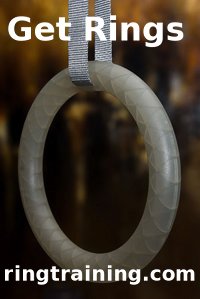December 12th, 2007
DOMS, or Delayed Onset Muscle Soreness is evil. Plain and simple. Over the last week, due to some regular bouts of rx’d crossfit workouts, I’ve spent more time being sore than non-sore. Typically the days when I’ve done the workout I feel fine. The next day I awake with a bit of soreness but at the 48 hour mark, post exercise, I’m either walking funny or wincing as I reach for a cereal bowl on the top shelf.
So I decided to do some more research on DOMS and what can be done to negate at least the symptoms. As I’ve written before, there are some ok solutions. Advil or some other Ibuprofen works wonders for me. Ice, to decrease the inflamation, can also help make the hurt not hurt so much. But what else can be done?
A great article can be found here, by Johndavid Maes, and Len Kravitz, Ph.D. called “Treating and Preventing DOMS”. Although it doesn’t come up with all the answers, some good points that it makes are as follows:
- Research done on NSAIDs (Nonsteroidal anti-inflammatory drugs - aspirin or ibuprofen) has shown mixed results and with the common side effects of the drugs, they aren’t a recommended approach for treatment.
- Some nutritional supplements, known for their antioxidant properties, such as vitamin C or E also show mixed results and may, in fact, worsen the problem.
- Warming up, pre workout, has been shown to be quite effective. This may be due to the increased muscle temperature and therefore increased elasticity, allowing for easier muscle contractions.
- Repeated bouts of lower intensity exercise before a high intensity session that would otherwise cause DOMS has been shown to its incidence and severity.
No Comments | In: DOMS, pain | | #
October 16th, 2007
DOMS stands for Delayed Onset Muscle Soreness. It’s the muscle pain you feel after an exercise, which generally gets worse as the next day or so progress. Within several days, the pain will usually subside. But what, exactly, is the cause of the pain?
A buildup of lactic acid will cause burning sensations around heavily worked muscles, but lactic acid disperses fairly quickly and so cannot be accounted for a delayed soreness. Instead, it is thought that the cause of DOMS is muscle damage caused by eccentric or lengthening muscle contractions, specifically during new training programs or exercises which you are unaccustomed to. It’s why you may never hurt much after the gym but after a few games of beach volleyball, you can barely walk for days afterwards.
The reason why the pain gets worse as time progresses, although still debated, is likely due to inflammation and the muscle tissue repair process that starts occurring after the damage.
2 Comments | In: pain | | #
October 15th, 2007
Running, lifting, biking… Three great ways to get in a workout. Three great ways to give yourself some muscle or joint soreness.
Yesterday I did the Oktoberfest 5k race in Waterloo. It was lots of fun and I posted a new personal best for the 5k. This personal best turned into an inability to walk without wincing in pain for the next 30+ hours.
So what do you do when you’re feeling sore from working out? How do you numb the pain? Unfortunate, short of some serious pain killers, there’s probably no 100% effective method, but fortunately we do have two key items widely available for at least a little bit of relief.
Two words - ice and Advil.
When your muscles are sore, there is likely some swelling going on. Putting some ice on the affected areas will help decrease the swelling and bring down the pain slightly. Advil (or Ibuprofen), while great at relieving pain, will also help with the swelling (unlike some other pain medication).
So when the 5k race has got you down a bit, reach in the freezer and then reach in the medicine cabinet. Taking these steps will not only relieve you of a bit of pain, this will also lead to faster recovery.
2 Comments | In: pain | | #

